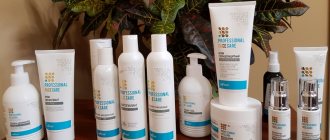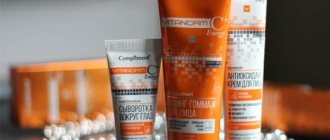A mole is a benign formation that appears on the body for various reasons. Usually nevi, as moles are also called, do not cause any inconvenience to people. But large tumors that rise above the skin can be accidentally injured by getting caught in clothing or some object. Many people do not know what to do if a mole is damaged and make standard mistakes, which sometimes lead to the development of melanoma.
What is the danger of damaging a mole?
There are a large number of myths about injured moles. People often think that if a mole falls off, it will definitely lead to cancer. But this is not entirely true. In fact, of course, there is such a risk, but a mole after an injury can develop into a malignant one only in 30% of cases.
Of course, this is also a significant figure, so damaged moles cannot be ignored and it is better to consult a doctor as soon as possible. Children need to be monitored with special care, because they often do not tell their parents about subtle wounds, and sometimes they themselves do not pay attention to them.
What other possible signs of malignancy can be seen with the naked eye?
- the nevus grows rapidly;
- the mole hurts, itches, goes numb;
- the mole changes shape: the borders blur, change outline, the surface becomes lumpy;
- many new moles appear;
- the mole darkens, turns blue or red;
- hair on the nevus is actively growing;
- the nevus gets wet;
- the mole is bleeding.
If you notice one or more changes, especially bleeding, you should contact your oncologist as soon as possible.
Melanoma is treatable in the early stages.
Actions to take if a mole is damaged
Actions to take when a mole is injured depend on the nature of the damage. If the mole is slightly scratched, but there is no blood, then it is enough to wash it with an antiseptic solution. It is not necessary to see a doctor.
If there is bleeding from a mole, the following measures must be taken:
- treat the wound with an antiseptic (excluding iodine);
- moisten a cotton swab with hydrogen peroxide and apply to the mole;
- When the bleeding stops, apply a bandage.
If the mole is severely torn, then you need to go to the clinic and have the tumor completely removed. After this, it is advisable to submit the biomaterial for histological examination. If the mole has fallen off completely, then it should also be sent for histology. But melanoma does not develop so quickly, and its first signs appear about a month after the mole is injured, so it would be best to undergo a re-examination.
When to see a doctor
You should shave your face, intimate areas, and areas where moles are located carefully - no one is immune from injury. Damaging hanging nevi is more dangerous; you should treat them carefully and treat them correctly. In some cases, specialist consultation is necessary:
- The bleeding doesn't stop. It weakens, then resumes again.
- Some people may develop a fever. Reason to seek help at the hospital.
- Redness of the skin around the wound, severe itching, and burning are not normal symptoms of wound healing. A dermatologist will conduct an examination and, if necessary, prescribe complete removal of the formation and tests.
- If, after healing, a person begins to regularly pick up a mole, it must be completely removed, eliminating re-injury and suppuration.
- Hair loss on a nevus is an alarming symptom that requires medical intervention.
- A change in the color of a mole to a darker color may be a sign of malignancy. Education is prohibited from scratching or tearing off.
A person should receive antibacterial treatment, the need is determined by a doctor. Self-medication is strictly prohibited.
Monitoring a mole
Once a mole is damaged, you can monitor it yourself. Measure it once a month, and if there are no changes within six months, then there is no reason to worry. Otherwise, see an oncologist.
In addition to the size, pay attention to the shape and color of the mole, and watch to see if liquid is oozing from it. If there are changes, this indicates that the mole has begun to degenerate into a malignant formation.
If the mole is located in a place where there is a risk of injury, then it is better to get rid of it for preventive purposes. Modern equipment allows you to remove tumors quickly and painlessly, using different methods.
The Medicenter clinic network provides safe removal of moles on both the face and body.
A little about moles
In order to understand what will happen if you squeeze out a mole or have any other damaging effect on it, you need to understand what structures such as nevi are. In fact, moles are benign epidermal neoplasms that consist of cells containing an excess amount of the natural pigment melanin. The formation of such structures can be caused by various endogenous and external factors, ranging from hormonal imbalances to ultraviolet exposure.
Most often, nevi appear on the human body in childhood, but it is possible that they form in adulthood, which can be both a manifestation of a physiological norm and a signal of the development of a pathological process, including oncology. In general, moles of any location and visual characteristics are often associated with cancer processes, which, of course, has some basis. Dermatologists say that under the influence of certain accompanying factors, almost any mole can transform into melanoma - a dangerous oncological condition of the epidermal integument. One of these dangerous factors is the traumatic effect of the nevus on the body.
There are several types of nevi, each of which has an individual level of risk of injury:
- Flat moles. Visually, such pigmented structures do not protrude above the surface of the epidermal integument, which significantly reduces the likelihood of mechanical damage to this type of nevus.
- Convex moles. Protruding beyond the boundaries of the surface layer of the epidermis, convex formations are often subject to traumatic effects due to contact with tight clothing, shoes and accessories (jewelry, belts, etc.), as well as during the process of washing, combing or performing any physical work.
- Hanging moles. These neoplasms are more often subject to injury than others due to their morphological characteristics.
The last two groups of nevi require especially careful handling and constant monitoring. In addition, the risk group, whose representatives are more likely to experience damage to epidermal nevi, usually includes women and children. The former lead such statistics due to their adherence to tight, uncomfortable clothing and rough accessories that can injure the body of the mole, as well as due to the peculiarities of manicure. Children rip off or tear off moles most often unconsciously, during play.
Possible complications and prevention
It is easy to damage a mole. Can be torn off by clothing or during hygiene procedures. It is necessary to remember about preventive measures:
- If there is a risk of the growth being torn by clothing due to its convex shape, it must be removed. Having previously passed tests and consulted a doctor.
- It is necessary to stop depilation when injury to the formation occurs, then treat the area with hydrogen peroxide, Miramistin (Chlorhexidine).
- If the nevus begins to fall off due to regular injury, contact a dermatologist (oncologist) for removal. Doing it yourself is prohibited.
- Pets can pick out moles with their claws while playing; this should be avoided.
If there is a risk of tearing off a mole with clothing, it should be removed. The main complication is malignancy. Ignoring the situation often leads to the formation of melanoma.
It’s easy to cut moles until they bleed. The risk of malignancy in education always exists. After a nevus injury, a person needs to visit a dermatologist, undergo recommended examinations, and take tests. Attentive attention to the problem that has arisen will preserve your health, eliminating the possibility of negative consequences.
What will happen next to the injured mole?
Any wound on a nevus or on regular skin will not disappear overnight. It will hurt a little and turn red, that is, inflamed. This cannot be avoided.
However, other unpleasant symptoms rarely appear.
Recommended actions:
- Disinfect the wound
- Stop the bleeding
- Wait for healing
The wound heals on average in two to three weeks.
What to do if an injured mole festers and hurts?
In this case, you may need the help of a doctor, because the appearance of pus from the wound may indicate complications.
Without them, the skin heals according to the standard scenario:
- In two days a protective crust grows
- Within two weeks the crust disappears
- In three weeks the wound disappears
It is very easy to recognize what an injured mole looks like. It is difficult to find a person who has never received scratches, bruises or other injuries in his life. They look the same on nevi. The protective crust on the new growths is clearly visible.
Although you can identify a wounded mole at home, to identify signs of degeneration you need the help of a doctor.
Why does blood come from a mole?
If you scratch a mole and it bleeds, this is a very bad sign. If everything is fine with the mole, it does not grow and does not change its appearance and color, then there is no need to touch it. However, if it is profusely engorged with blood or bleeding occurs from the nevus, this is a sign of a certain pathology that must be clearly diagnosed. A healthy formation will not bleed, so if blood comes from the nevus, it means it is injured.
Sometimes it happens that you scratch a mole without bleeding.
Injury to moles: consequences
First of all, it should be noted that the development of the oncological process is not always associated with scratches or other damage to pigmented nevi, and melanoma will not necessarily be a consequence of such a phenomenon. At the same time, scientists have proven that for moles that are initially classified as melanoma-hazardous, trauma to the surface can lead to an acceleration of the onset of a pathological malignant process. This is one of the main reasons why it is necessary to protect any nevi from all kinds of aggressive influences that damage their structure.
In addition to malignant transformation, there are several other dangerous consequences that may result from torn or scratched moles:
- Development of severe bleeding. The body of the nevus is equipped with many blood vessels that saturate the cells of this formation with oxygen and nutrients. Some nevi, such as hemangiomas and angiomas, are composed entirely of a plexus of blood channels. In this regard, if such a formation is damaged, severe bleeding can occur, which can only be stopped through medical care. After visual healing, such a mole often bleeds for a long period of time, which is a consequence of injury.
- Attachment of infections. The open wound surface that forms at the site of the damaged nevus provides rapid access for various infectious agents to the skin, and, accordingly, to the entire human body. As a result, a local infectious process or a generalized pathological condition may develop, which is accompanied by suppuration of the areas of contamination.
- Inflammatory processes. Often after mechanical trauma to a nevus, people notice swelling of the area around the mole and hyperemia of the skin. This, along with pain during touching, may indicate the development of an inflammation process. This reaction is often accompanied by spasm of the blood vessels, which is manifested by the appearance of a white spot around the injured mole. If left untreated, this process can lead to suppuration of the wound surface.
- Formation of scars and scars. This aspect especially worries women when she scratches a mole on her face with some accessory or manicure. The consequence of such a careless attitude can be an aesthetic defect that forms against the background of excessive growth of connective tissue. Subsequently, such scars can only be removed using special cosmetic techniques.
To avoid the unpleasant phenomena described above, it is necessary to treat moles with care and attention and, best of all, remove the formation located in the high-risk area in advance.
Removal of nevi
There are several ways to get rid of moles:
| Type of intervention | Description |
| Electrocoagulation | The formation is eliminated using current. After the manipulation, scars and cicatrices sometimes remain, so they resort to eliminating nevi that are located in inconspicuous places |
| Radiosurgery | A frequently used procedure because it virtually eliminates the risk of infection. Scars on the skin remain in isolated cases |
| Laser therapy | The most common manipulation. The patient does not feel pain during the process. The procedure allows you to get rid of moles even in hard-to-reach places. There are no scars left after use |
| Cryodestruction | Freezing the nevus with liquid nitrogen is used, during which the old cells die and fall off. Does not leave scars on the skin |
| Surgical intervention | The nevus is removed by a surgeon using a scalpel. Surgery is used to get rid of large growths and those that are deeply located. Since a removed mole leaves behind noticeable scars, this type of intervention is not used to eliminate facial lesions. It is used to get rid of nevi in inconspicuous places, for example, on the back. |
After removing the formation, you need to carefully care for it. It is forbidden to tear off the crust covering the wound; it will fall off on its own.
Damage protection
No one is immune from accidental damage to a birthmark. Having encountered discomfort and bleeding once, it is important to be able to protect other nevi from negative effects.
For this purpose it is recommended:
- avoid ultraviolet irradiation of the mole;
- protect moles with a band-aid when wearing tight clothes;
- avoid accidentally scratching nevi;
- be careful while shaving.
Using UV protection when going outside during periods of increased solar activity will help prevent the degeneration of birthmark cells.










